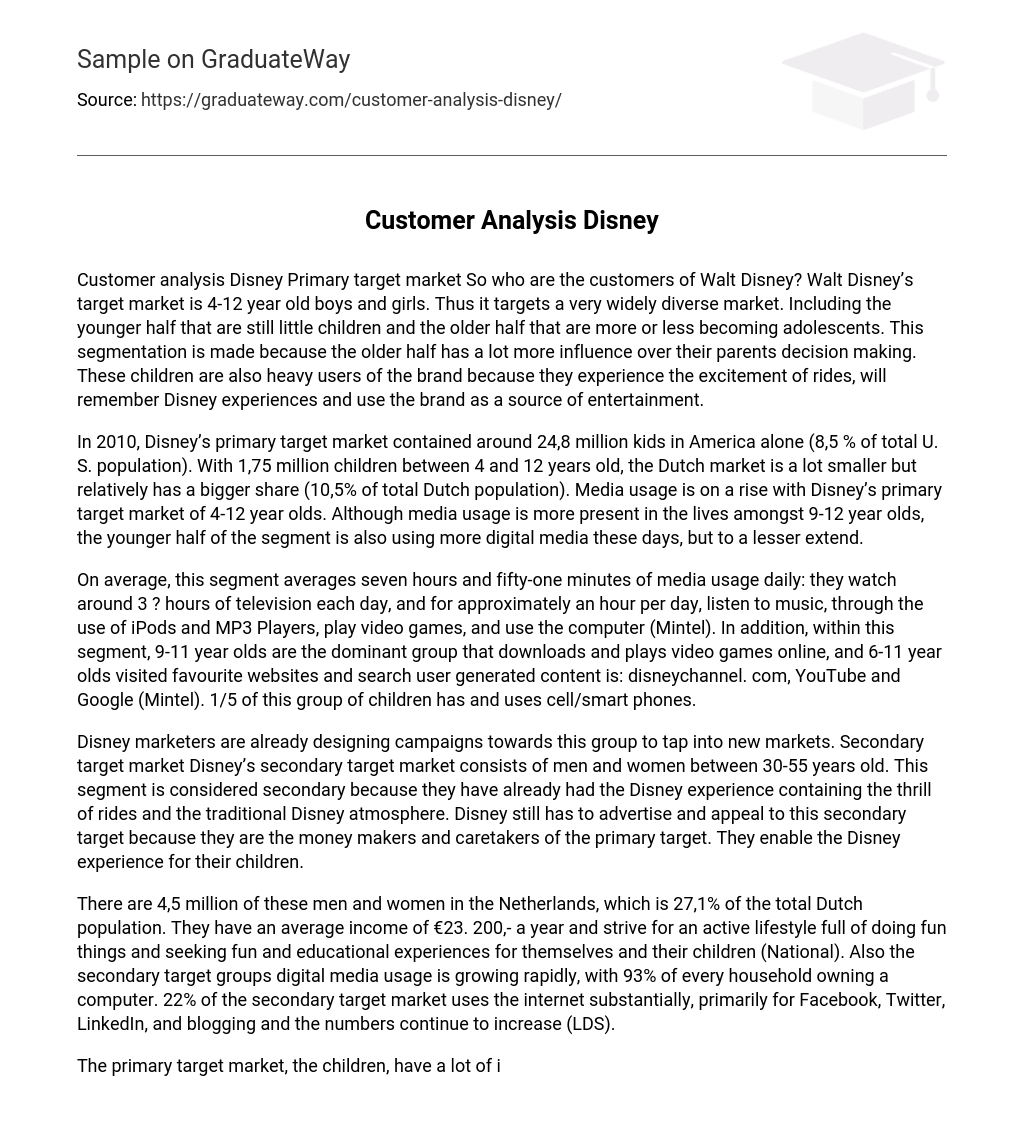Customer analysis Disney Primary target market So who are the customers of Walt Disney? Walt Disney’s target market is 4-12 year old boys and girls. Thus it targets a very widely diverse market. Including the younger half that are still little children and the older half that are more or less becoming adolescents. This segmentation is made because the older half has a lot more influence over their parents decision making. These children are also heavy users of the brand because they experience the excitement of rides, will remember Disney experiences and use the brand as a source of entertainment.
In 2010, Disney’s primary target market contained around 24,8 million kids in America alone (8,5 % of total U. S. population). With 1,75 million children between 4 and 12 years old, the Dutch market is a lot smaller but relatively has a bigger share (10,5% of total Dutch population). Media usage is on a rise with Disney’s primary target market of 4-12 year olds. Although media usage is more present in the lives amongst 9-12 year olds, the younger half of the segment is also using more digital media these days, but to a lesser extend.
On average, this segment averages seven hours and fifty-one minutes of media usage daily: they watch around 3 ? hours of television each day, and for approximately an hour per day, listen to music, through the use of iPods and MP3 Players, play video games, and use the computer (Mintel). In addition, within this segment, 9-11 year olds are the dominant group that downloads and plays video games online, and 6-11 year olds visited favourite websites and search user generated content is: disneychannel. com, YouTube and Google (Mintel). 1/5 of this group of children has and uses cell/smart phones.
Disney marketers are already designing campaigns towards this group to tap into new markets. Secondary target market Disney’s secondary target market consists of men and women between 30-55 years old. This segment is considered secondary because they have already had the Disney experience containing the thrill of rides and the traditional Disney atmosphere. Disney still has to advertise and appeal to this secondary target because they are the money makers and caretakers of the primary target. They enable the Disney experience for their children.
There are 4,5 million of these men and women in the Netherlands, which is 27,1% of the total Dutch population. They have an average income of €23. 200,- a year and strive for an active lifestyle full of doing fun things and seeking fun and educational experiences for themselves and their children (National). Also the secondary target groups digital media usage is growing rapidly, with 93% of every household owning a computer. 22% of the secondary target market uses the internet substantially, primarily for Facebook, Twitter, LinkedIn, and blogging and the numbers continue to increase (LDS).
The primary target market, the children, have a lot of influence over the buying decision of the secondary target market, their caretakers. Children have, in particular, a large say of the decisions being made for food and entertainment. “One in four parents (24%) say they buy their children what they ask for most of the time, and 75% say they do so, some of the time” (Mintel). Despite this large say, parents tend to purchase merchandise that is associated with the kid programming they also enjoy.





